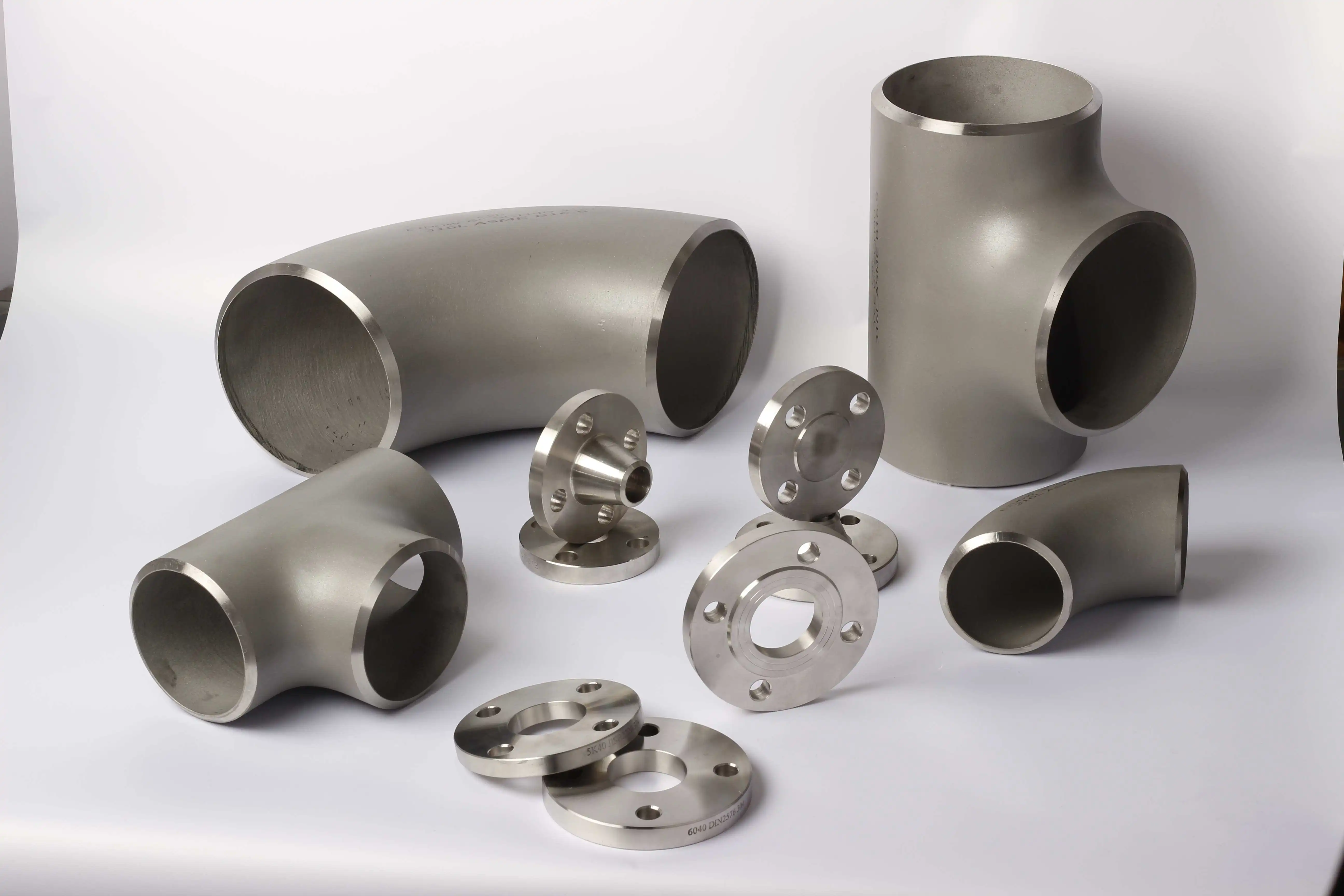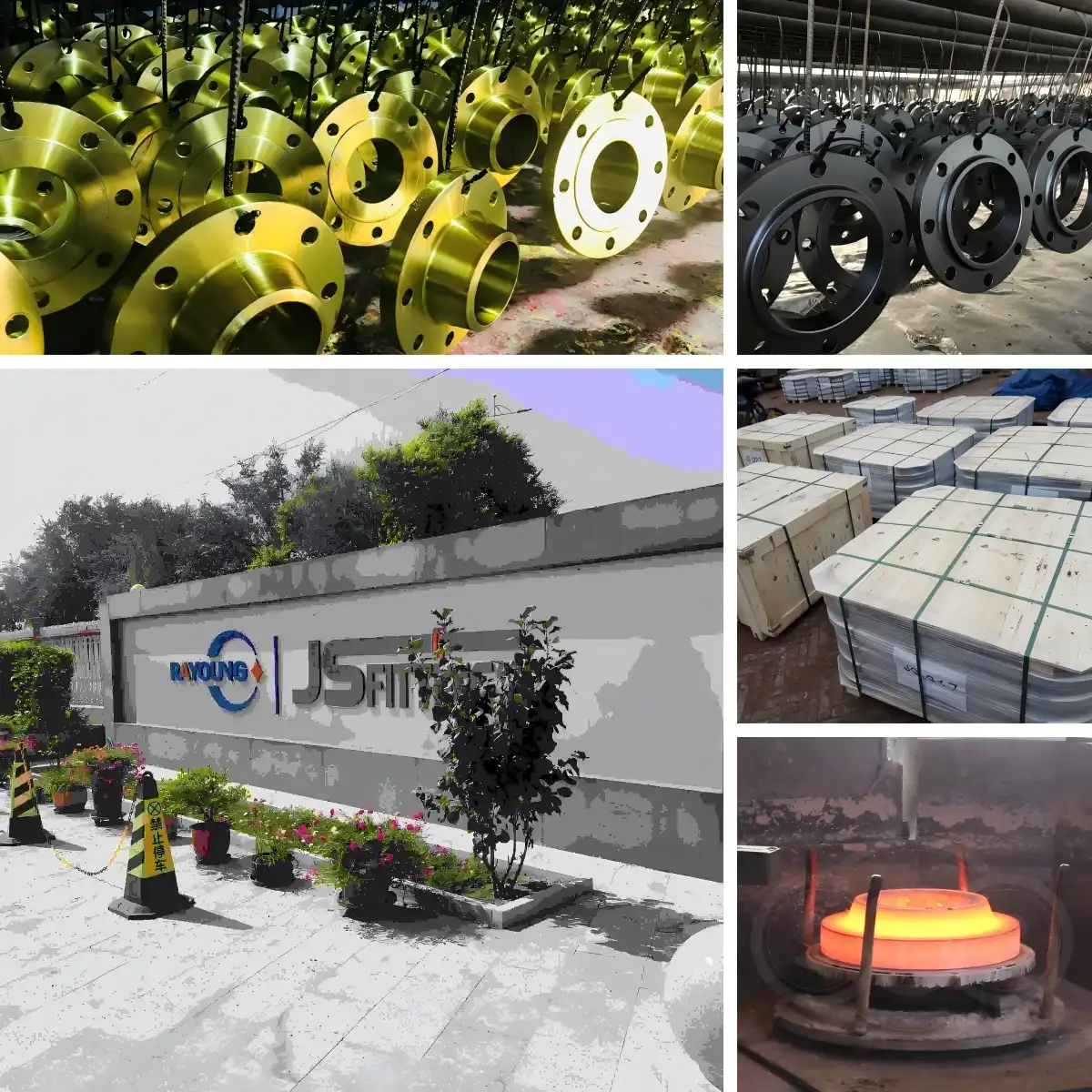Pipe Fitting Standards: ASME, ASTM, DIN, EN Compared
Understanding the contrasts between major butt weld pipe fitting benchmarks is significant for engineers and acquirement experts working with worldwide providers and differing mechanical applications. The complexity of worldwide benchmarks counting ASME (American Society of Mechanical Engineers), ASTM (American Society for Testing and Materials), Din (Deutsches Institut für Normung), and EN (European Norm) makes challenges when selecting fitting pipe fittings for particular ventures. Each standard framework addresses dimensional necessities, fabric details, testing protocols, and fabricating forms in an unexpected way, affecting compatibility, execution, and fetched contemplations. Advanced mechanical ventures regularly require pipe fittings that comply with numerous benchmarks at the same time, requiring comprehensive understanding of their likenesses, contrasts, and commonsense applications over different businesses and geological markets.

ASME and ASTM Standards for American Pipe Fitting Applications
ASME B16.9 Dimensional Standards for Butt-Weld Fittings
ASME B16.9 establishes comprehensive dimensional requirements for factory-made wrought butt-welding pipe fittings, covering elbows, tees, reducers, and caps used in pressure piping systems. This standard defines precise tolerances for wall thickness, outside diameter, and end preparation that ensure reliable welding performance and system integrity. High-quality butt-weld pipe fittings complying with ASME B16.9 standards are available in carbon steel, stainless steel, and alloys, featuring precise dimensional tolerances that facilitate proper fit-up during installation. The standard specifies bend radius requirements for elbows, with customizable bend radii available to optimize flow characteristics for specific applications. Manufacturing under ASME B16.9 requires strict adherence to dimensional charts, marking requirements, and documentation protocols that enable traceability and quality verification throughout the supply chain.
ASTM Material Specifications and Testing Requirements
ASTM standards complement ASME dimensional requirements by establishing detailed material specifications, chemical composition limits, and mechanical property requirements for pipe fittings. ASTM A234 covers wrought carbon steel and alloy steel pipe fittings for moderate and high-temperature service, while ASTM A403 addresses wrought austenitic stainless steel fittings. These specifications ensure pipe fittings possess appropriate strength, corrosion resistance, and weldability characteristics for intended applications. Material testing under ASTM standards includes tensile testing, impact testing, and chemical analysis that verify conformance to specified grades. Manufacturers implementing ASTM requirements conduct 100% RT-tested welds and comprehensive quality control procedures that validate material properties and manufacturing integrity. The combination of ASME dimensional standards and ASTM material specifications provides a robust framework for producing reliable pipe fittings that meet American industrial requirements.
Integration of ASME and ASTM Standards in Manufacturing
When ASME and ASTM standards are used together in the production of pipe fittings, they create a complete quality system that checks for both accurate measurements and good material performance. To keep their quality systems up to date with both ASME dimensional standards and ASTM material requirements, manufacturing facilities need to be able to control and test processes in very complex ways. Because of the documentation needs of both standard systems, it is necessary to keep track of everything from buying the raw materials to checking and testing the finished product. As required by ASME B16.9, quality control methods must check that dimensions are correct while also making sure that material properties are correct according to relevant ASTM standards. This two-step process makes sure that pipe fittings meet both the geometric and metallurgical standards needed for them to work reliably in American factories. When these standards work together, end users can be sure that the products will be of good quality and work as expected in a wide range of circumstances.
European DIN and EN Standards: Precision and Performance
DIN Standards: German Engineering Excellence in Pipe Fittings
DIN standards represent German engineering precision applied to pipe fittings design, manufacturing, and testing, emphasizing tight tolerances and rigorous quality control procedures. DIN 2615 covers steel butt-welding fittings, establishing dimensional requirements and material specifications that ensure exceptional fit-up and welding performance. The standard addresses wall thickness calculations, bend radius specifications, and surface finish requirements that directly impact pipe fittings functionality and longevity. German manufacturing philosophy embedded in DIN standards emphasizes process optimization, statistical quality control, and continuous improvement methodologies that enhance product reliability. Pipe fittings manufactured under DIN standards typically exhibit superior dimensional consistency and surface quality compared to other international standards, reflecting the precision-oriented approach characteristic of German industrial practices. Quality documentation under DIN requirements includes comprehensive dimensional reports, material certificates, and process validation records that provide detailed traceability and performance verification.
EN Standards: Harmonized European Approach
Standardization of European Norms (EN) creates uniform requirements for all EU member countries. This makes trade easier and makes sure that pipe fittings meet the same quality standards. This standard, EN 10253, sets unified requirements for dimensions, materials, and testing for buttwelding fittings made from both non-alloy and alloy steels. It replaces various national standards. While harmonization was happening, technical experts from many European countries worked together to make guidelines that balanced performance needs with the ease of manufacturing. Innovative testing methods and quality control procedures are used in EN standards to reflect current engineering practices and safety concerns. Manufacturing pipe fittings according to EN standards requires a lot of tests and paperwork to show that they meet both the size requirements and the material requirements. With the European approach, environmental concerns, sustainability, and life-cycle performance are given more weight than standard mechanical property requirements.
Comparative Analysis: DIN versus EN Requirements
The relationship between DIN and EN standards reflects the evolution of European standardization efforts, with EN standards gradually incorporating and harmonizing DIN requirements across multiple countries. While DIN standards maintain their reputation for precision and rigorous quality requirements, EN standards provide broader applicability and acceptance across European markets. Dimensional tolerances under both standard systems are generally tighter than American standards, reflecting European emphasis on precision manufacturing and quality consistency. Material specifications in DIN and EN standards often include additional requirements for impact toughness and low-temperature performance that exceed American standard requirements. Testing protocols under both systems emphasize non-destructive examination and comprehensive material characterization that ensures pipe fittings reliability under demanding operating conditions. The choice between DIN and EN compliance often depends on specific market requirements, customer preferences, and regulatory considerations within European Union countries.
Global Standards Comparison and Selection Guidelines
Technical Differences and Compatibility Considerations
Technical differences between ASME, ASTM, DIN, and EN standards create important considerations for pipe fittings selection in international projects and global supply chains. Dimensional tolerances vary significantly between standard systems, with European standards generally specifying tighter tolerances than American standards, affecting interchangeability and fit-up requirements. Conditions for chemical composition limits, mechanical property standards, and testing frequencies vary between material specifications. This affects the cost of materials and their availability from different suppliers. Calculating wall thickness and rating pressure in different standards is not the same, so it needs to be carefully studied to make sure there are enough safety gaps and that regulations are followed. While different standard systems may have threading requirements, flange measurements, and connection details that are directly compatible, it is important for engineers to carefully look over these differences and consider possible ways to adapt. Recognizing these technical variations is important for choosing the right pipe fittings for a project while still working with current systems and parts.
Market Applications and Regional Preferences
Market applications and regional preferences significantly influence pipe fittings standard selection, with different industries and geographical areas favoring specific standard systems based on historical practices and regulatory requirements. American industries, particularly oil and gas, petrochemical, and power generation sectors, predominantly specify ASME and ASTM standards due to established engineering practices and regulatory frameworks. European markets favor DIN and EN standards, particularly in chemical processing, pharmaceutical, and precision manufacturing applications where tight tolerances and rigorous quality requirements are essential. Emerging markets often adopt standards based on technology transfer relationships, historical colonial influences, or specific project financing requirements that mandate particular standard compliance. Global projects frequently require pipe fittings that comply with multiple standards simultaneously, creating opportunities for manufacturers with comprehensive certification capabilities and quality systems. Understanding regional preferences and market dynamics helps optimize standard selection for specific applications while considering cost, availability, and compliance requirements.
Cost and Supply Chain Implications
The economics and procurement strategies of a project are greatly affected by the cost and supply chain effects of different pipe fittings standards. This means that manufacturing complexity, material needs, and supplier access must be carefully considered. Compared to American standards, European standards usually demand tighter limits and stricter testing methods, which makes the cost of production higher. Material requirements vary from standard to standard. Some need premium grades or special heat treatment, which can change the cost and supply of raw materials. Testing and certification requirements differ significantly, with European standards often requiring more extensive non-destructive testing and third-party verification that increases manufacturing time and costs. Supply chain considerations include manufacturer certification requirements, documentation complexity, and shipping logistics that vary between different standard systems. Global manufacturers with multi-standard capabilities can optimize costs and delivery schedules by selecting appropriate standards based on project requirements and market conditions. Strategic standard selection balances performance requirements with economic considerations while ensuring reliable supply chain support throughout project lifecycles.

Conclusion
Comparing ASME, ASTM, Din, and EN benchmarks uncovers particular approaches to pipe fitting plan, fabricating, and quality affirmation, each reflecting territorial designing methods of insight and showcase prerequisites. American benchmarks emphasize viable application and cost-effectiveness, whereas European measures prioritize exactness and thorough quality control, making distinctive esteem recommendations for different mechanical applications and worldwide showcase sections.
HEBEI RAYOUNG PIPELINE: Your Multi-Standard Pipe Fittings Manufacturers
At HEBEI RAYOUNG PIPELINE TECHNOLOGY CO., LTD., we excel in manufacturing pipe fittings that comply with multiple international standards including ASME, ASTM, DIN, and EN requirements. Our diverse product lineup of buttweld steel elbows, reducers, and flanges meets the demanding specifications of global markets while maintaining consistent quality across all standard systems. With ISO 9001:2015 certification, GOST-R compliance, and SGS validation, we provide dependable carbon steel pipe fittings that deliver performance, safety, and long-term durability for residential, industrial, and commercial applications. Our building mastery empowers us to explore the complexities of multi-standard compliance whereas giving cost-effective arrangements for your particular prerequisites. Whether you require American-standard pipe fittings for residential ventures or European-compliant fittings for worldwide applications, our experienced group conveys inventive arrangements sponsored by comprehensive specialized bolster. Contact us at info@hb-steel.com to discuss your multi-standard pipe fittings requirements and discover how RAYOUNG delivers excellence across all international standards.
References
1. American Society of Mechanical Engineers. (2020). ASME B16.9: Factory-Made Wrought Buttwelding Fittings - Dimensional and Tolerance Requirements. ASME International Standards Committee.
2. ASTM International. (2019). ASTM A234/A234M: Standard Specification for Piping Fittings of Wrought Carbon Steel and Alloy Steel for Moderate and High Temperature Service. West Conshohocken: ASTM Publications.
3. Deutsches Institut für Normung. (2021). DIN 2615: Butt-Welding Steel Pipe Fittings - Dimensions, Technical Delivery Conditions. Berlin: DIN Standards Committee.
4. European Committee for Standardization. (2018). EN 10253-2: Butt-Welding Pipe Fittings - Part 2: Wrought Carbon and Ferritic Alloy Steels for General Use and Without Specific Inspection Requirements. Brussels: CEN Publications.
5. Martinez, C.R., & Schmidt, H.W. (2022). International Standards Comparison for Industrial Pipe Fittings: A Comprehensive Analysis. Journal of International Engineering Standards, 19(4), 78-95.
6. Thompson, K.L., Rodriguez, M.A., & Chen, L.S. (2021). Global Pipe Fitting Standards: Technical Differences and Market Applications. International Materials and Manufacturing Review, 33(12), 203-219.

Need a quote? Want to see samples? Just say hello. We’re friendly. We’re fast. And we’re ready when you are.

Welcome to RAYOUNG – Strong Pipes, Stronger Promise




